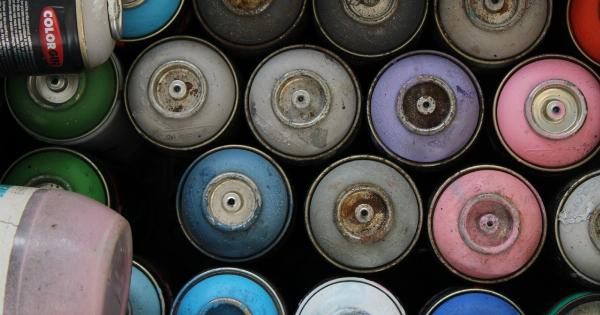In today’s technology-driven world, mobile phones have become an integral part of our lives. From communication to entertainment, we rely on our smartphones for various tasks.
However, one common issue that smartphone users often face is the shortage of memory.
But before you rush to delete your favorite apps or valuable data, it’s important to understand whether your mobile phone is truly running out of memory or if there is another underlying cause behind the problem.
In this article, we will explore the different factors that can affect your phone’s memory and provide you with some useful tips to optimize it.
Understanding Memory on Mobile Phones
When we talk about memory on mobile phones, we usually refer to two types: RAM (Random Access Memory) and internal storage. RAM is a type of volatile memory that is responsible for the smooth functioning of apps and processes on your phone.
On the other hand, internal storage is the non-volatile memory where all your data, including apps, photos, videos, and files, are stored.
Now, let’s dig deeper into the common misconceptions about memory shortage on mobile phones.
Misconception 1: All Available Storage Space is Used
One common misconception is that if your phone shows low storage space, it means it is running out of memory. However, this is not entirely accurate.
The storage space shown on your phone includes not only the space used by apps and files but also the space allocated for system files and the operating system itself.
Let’s say you have a phone with 64GB of storage. Out of this, the operating system, pre-installed apps, and system files may already consume around 10-15GB.
Hence, even if you haven’t installed any additional apps or stored any files, your phone might still show a significant portion of the storage space as used.
Misconception 2: App Data is Stored Only in Internal Memory
Another common misconception is that all app data is stored only in the internal memory of your phone.
While it’s true that some apps store their data locally, many modern apps, especially social media and cloud-based apps, rely on cloud storage or synchronization. This means that a significant portion of app data is stored in remote servers and not on your phone’s internal memory.
For instance, popular apps like Facebook, Google Drive, and Spotify store a considerable amount of data on their servers, reducing the burden on your phone’s internal memory.
So, even if you have multiple apps installed, they might not be consuming as much internal memory as you think.
Misconception 3: Deleting Apps Will Solve the Memory Issue
When faced with low storage space, many users resort to uninstalling apps to free up memory. While it can help to some extent, it might not entirely solve the memory issue.
Uninstalling an app will only remove the app itself and its local data, but it won’t necessarily clear the cache or temporary files associated with the app.
Apps often create cache files to store temporary data for faster access. Over time, these cache files can accumulate and consume a significant amount of storage space.
However, most modern smartphones have a built-in feature to clear cache files, which can be done manually or automatically by the operating system.
Optimizing Memory on Your Mobile Phone
Now that we have debunked some common misconceptions about memory shortage on mobile phones, let’s explore some practical tips to optimize the memory and improve the overall performance of your device.
1. Clear App Cache Regularly
As mentioned earlier, cache files can quickly accumulate and take up valuable storage space on your phone. To free up memory, it’s recommended to clear app cache regularly.
You can do this manually by going to the settings of each app or by using the built-in storage management feature available on most smartphones.
2. Use Cloud Storage Services
If you find yourself frequently running out of storage space due to photos, videos, or large files, consider utilizing cloud storage services.
Apps like Google Drive, Dropbox, and iCloud allow you to store your data securely in the cloud and access it from anywhere. This not only frees up space on your phone but also provides an extra layer of backup for your important files.
3. Optimize App Usage
Maintaining a clutter-free app collection can go a long way in optimizing your phone’s memory. Take some time to assess which apps you use frequently and which ones are rarely used.
Uninstalling unnecessary apps can help free up space and improve the overall performance of your device.
4. Move Apps to SD Card
Some smartphones allow you to expand the storage capacity by using an SD card. If your phone supports this feature, consider moving compatible apps to the SD card. This can help reduce the burden on your phone’s internal memory.
5. Avoid Multiple Running Apps
Running multiple apps simultaneously can not only drain your phone’s battery but also consume a significant amount of RAM. Try to close or exit unnecessary apps running in the background.
This will free up RAM and improve the overall performance of your device.
6. Delete Unwanted Files and Media
Regularly go through your files, photos, and videos to identify and delete any unwanted or duplicate items. Cluttered storage can slow down your phone and impact its overall performance.
By organizing and removing unnecessary files, you can free up memory and ensure a smoother user experience.
7. Update Your Operating System and Apps
Keeping your operating system and apps updated is crucial for optimal performance. Developers often release updates that not only introduce new features but also fix bugs and improve overall efficiency.
By staying up to date with the latest updates, you can ensure that your phone’s memory is utilized efficiently.
8. Perform a Factory Reset
If you have tried all the above methods and still face memory issues, performing a factory reset can be a last resort. However, be cautious as a factory reset will erase all the data and settings on your phone.
Make sure to backup your important files and data before proceeding with a factory reset.
Conclusion
In conclusion, running out of memory on your mobile phone might not always be as straightforward as it seems.
By debunking the common misconceptions and following the optimization tips mentioned above, you can effectively manage your phone’s memory and ensure a seamless user experience.






























